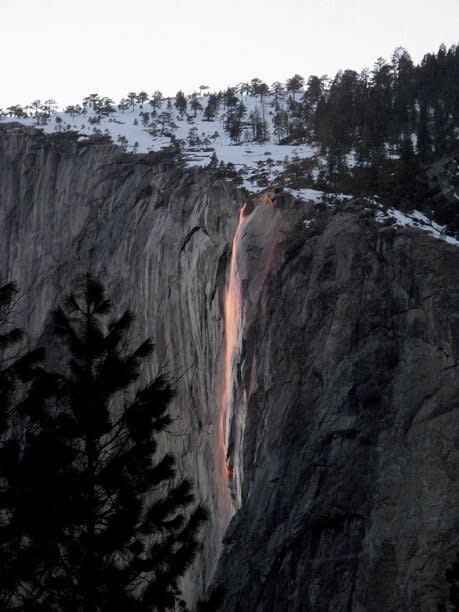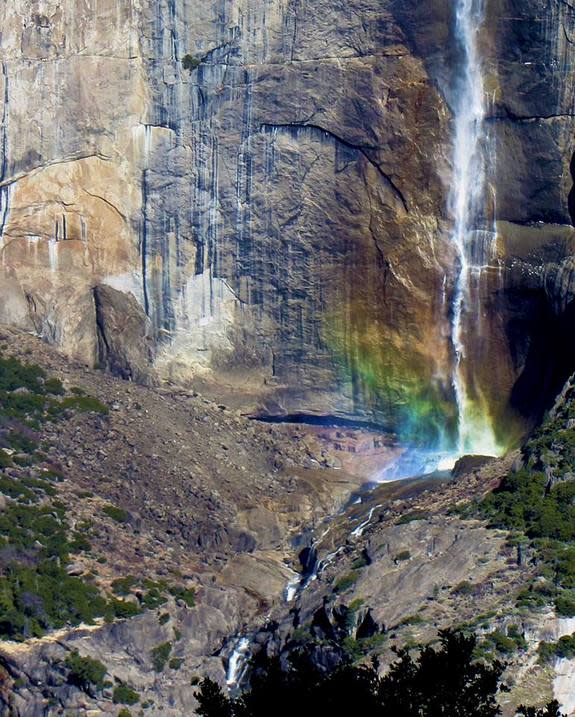California's Springtime Wonders Struck by Drought
California springtime usually brings spectacular, fiery displays of flowers and flowing waterfalls, but this year's drought is putting a damper on the state's natural wonders.
At Yosemite National Park, the ongoing drought dried up waterfalls earlier this month, including flaming Horsetail Fall. Photographers travel from around the world to the park in February to try and capture Horsetail Fall glowing in the setting sun.
Horsetail Fall only flows in the winter and early spring, fed by sun-warmed snowmelt. As the narrow waterfall drops over El Capitan, the sun's last rays, called alpenglow, appear to light the water on fire. The angle of the sun only creates these "firefall" conditions for about two weeks at the end of February. [8 Amazing National Park Structures]
The good news for shutterbugs is the atmospheric pattern that has California locked in a terrific drought meant clear skies over Yosemite during the peak firefall conditions. The bad news? The mountain snowpack is so low this year that Horsetail Fall and even Yosemite Falls went dry for most of February.
A series of storms brought the waterfall back to life in late February, in time for photographers to capture the yearly phenomenon starting Feb. 16, albeit at low flow. But when the water is low, the firefall's amazing light show is harder to see.
"In order for the light to hit the water to get that glowing, burning effect, more water is needed, so it's definitely not as good as it's been in years past," said Scott Gediman, a Yosemite National Park ranger. "The drought has definitely affected the waterfall."
Two more storms are forecast to bring more rain and snow to Yosemite this weekend, just before the firefall disappears again until next year.
"The window is closing," Gediman said.
Further south, flower lovers are concerned that this year's poppy bloom will be hard hit by the California drought. Every spring, California poppies — the state flower — carpet rolling hills and roadways throughout the state. But at the Antelope Valley California Poppy Reserve outside of Los Angeles, one of the most reliable poppy-growing spots in the state, the grassy hills are brown and dry. The reserve received less than an inch of rain (about 1.5 centimeters) this year, just 10 percent of its annual rainfall.
Preserve officials think 2014 will not be a good bloom year, they said in their most recent bloom update. "There are a few sprouts coming up, but without additional precipitation they won't survive to flower," the statement said.
Email Becky Oskin or follow her @beckyoskin. Follow us @OAPlanet, Facebook and Google+. Original article at Live Science's Our Amazing Planet.
Copyright 2014 LiveScience, a TechMediaNetwork company. All rights reserved. This material may not be published, broadcast, rewritten or redistributed.



